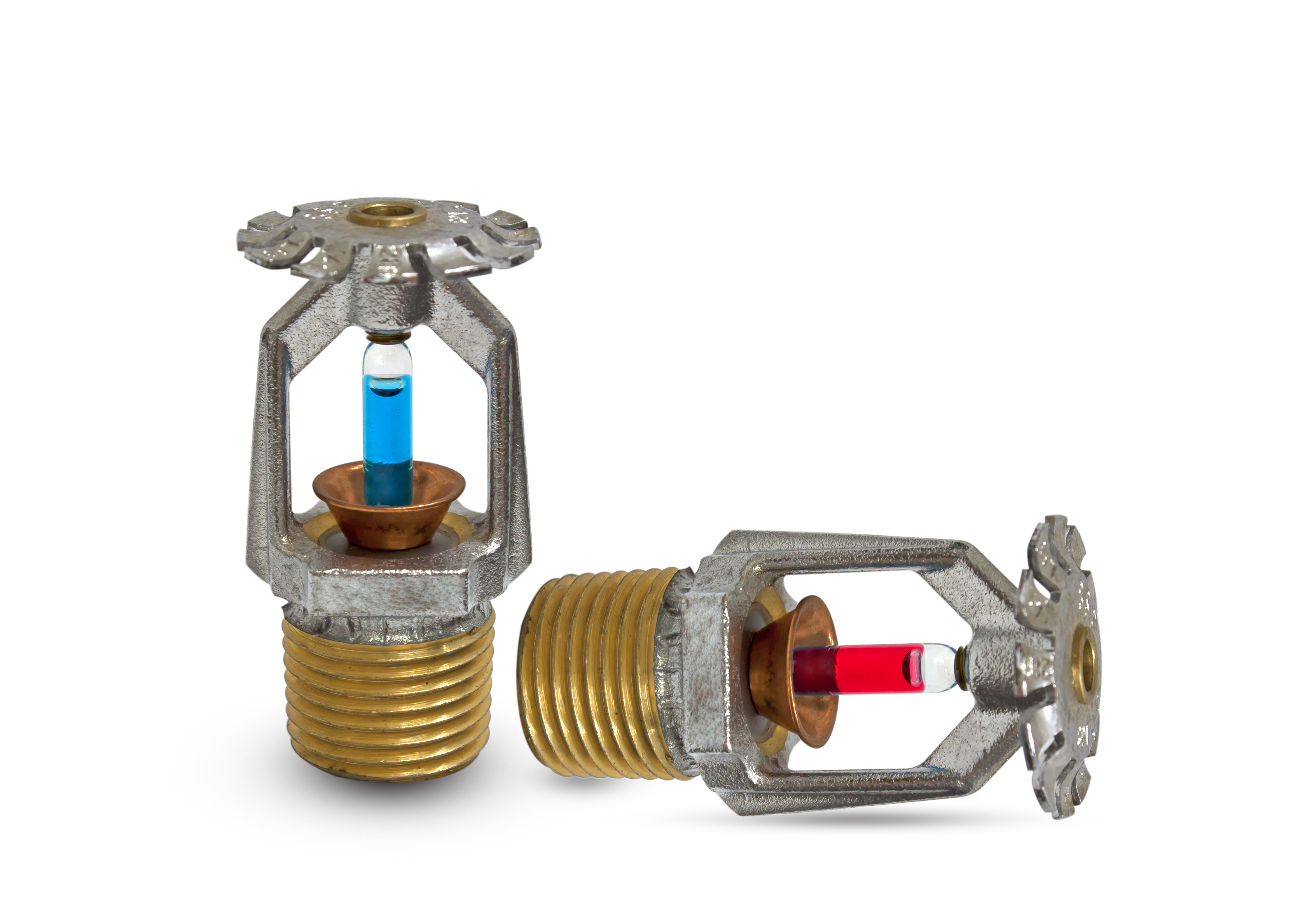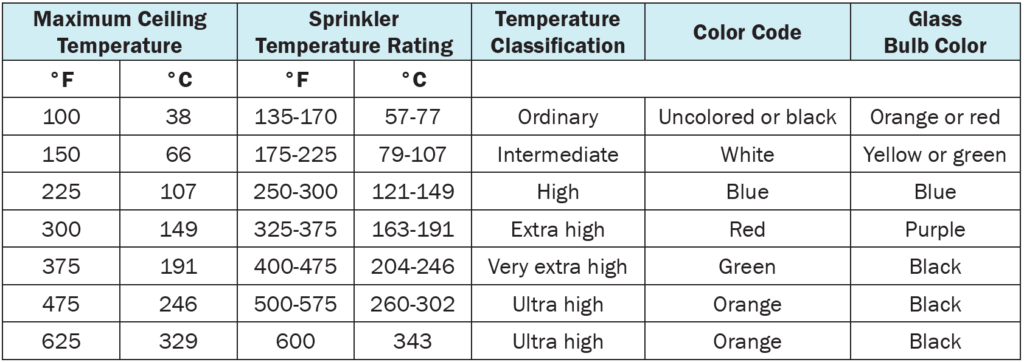
 Choosing the right fire sprinkler is critical to the success of a sprinkler system in controlling or extinguishing a fire. Sprinklers should be chosen by evaluating the occupancy, hazards, and conditions (ceiling height, type of construction, ambient temperature, available water supply, etc.) of the building, and more specifically, the area the sprinklers will be protecting.
Choosing the right fire sprinkler is critical to the success of a sprinkler system in controlling or extinguishing a fire. Sprinklers should be chosen by evaluating the occupancy, hazards, and conditions (ceiling height, type of construction, ambient temperature, available water supply, etc.) of the building, and more specifically, the area the sprinklers will be protecting.
On the surface, sprinklers seem like very simple devices, but a lot of research and testing goes into their design. Sprinklers are classified by NFPA 13 Standard for the Installation of Sprinkler Systems in several ways, including temperature rating, K-factor, orientation, response-type, design and performance characteristics, and special service conditions. Some sprinklers are designed for the protection of storage, and some are designed as special application sprinklers. In Part 1 of this blog, we’ll review sprinkler basics, temperature ratings, and K-factor. In Part 2, we’ll look at installation orientation, response type, design and performance characteristics, and special service conditions.
Sprinkler Basics
A sprinkler is one component of many that make up a fire sprinkler system. The piping system, including the water mains to the building, the riser, feed main, cross main, and sprinkler branch lines, along with associated valves, fittings, and couplings, make up the water delivery system that supplies water to the sprinklers. Sprinklers are the final component necessary to effectively get the “wet stuff” on the “red stuff” to control and/or extinguish the fire.
A sprinkler “head” is comprised of a cast or forged metal frame with an integrated hole, or orifice, at one end and a water deflector at the other end. A heat-sensitive operating element, or thermal element, is affixed within the frame that keeps the orifice covered and prevents water from discharging from the sprinkler. In the event of a fire, the thermal element will actuate once it is exposed to sufficient heat from the fire as determined, in part, by the temperature rating of the sprinkler. Upon actuation of the thermal element, the orifice will be uncovered and water will discharge from the sprinkler and be distributed in a specific spray pattern determined by the sprinkler’s deflector. In this way, a sprinkler acts as both a heat detector and a water discharge device.
Temperature Rating
To select the appropriate temperature rating for the sprinkler, one must be careful to match the temperature rating of the sprinkler to the maximum expected ceiling temperature to avoid inadvertent discharges. See table below from NFPA 13 (2016 Ed) Table 6.2.5.1 Temperature Ratings, Classifications, and Color Codings.
Additionally, FM Global Data Sheet (FMDS) 3-26, Fire Protection Water Demand for Nonstorage Sprinklered Properties, requires the use of high temperature sprinklers for all dry pipe systems in Section 2.1.1.1.
K-Factor
K-factor is a mathematical constant established by the sprinkler manufacturer that relates the flow of water that is discharged from the sprinkler at a given pressure. When water is discharged through the sprinkler orifice, the orifice diameter and the hydraulic characteristics of the orifice determine the flow achieved through the sprinkler at a given pressure. An increase in the K-factor of a sprinkler corresponds to a higher flow (gpm) at a given pressure, and a decrease in the K-factor corresponds to a lower flow at a given pressure.
K-factors may be chosen based on water supply characteristics. For a supply with higher available water volume at a lower pressure, higher K-factor sprinklers can be used. For water supplies with lower water volume available at a higher pressure, smaller K-factor sprinklers can be used.
Additionally, NFPA 13 and FM Global Data Sheets 2-0, 3-26, and 8-9 specify the appropriate K-factor, minimum operating pressure, and number of sprinklers (or design area) to be calculated for each applicable design criteria. NFPA 13 further specifies that (minimum) K=8.0 sprinklers must be used for protection of storage with a density of 0.20 or greater, and (minimum) K=11.2 sprinklers must be used for protection of storage with a density of 0.34 or greater.
Next week, we’ll continue this discussion in Choosing the Right Fire Sprinkler – Part 2, where we’ll review installation orientation, response type, design and performance characteristics, and special service conditions.


